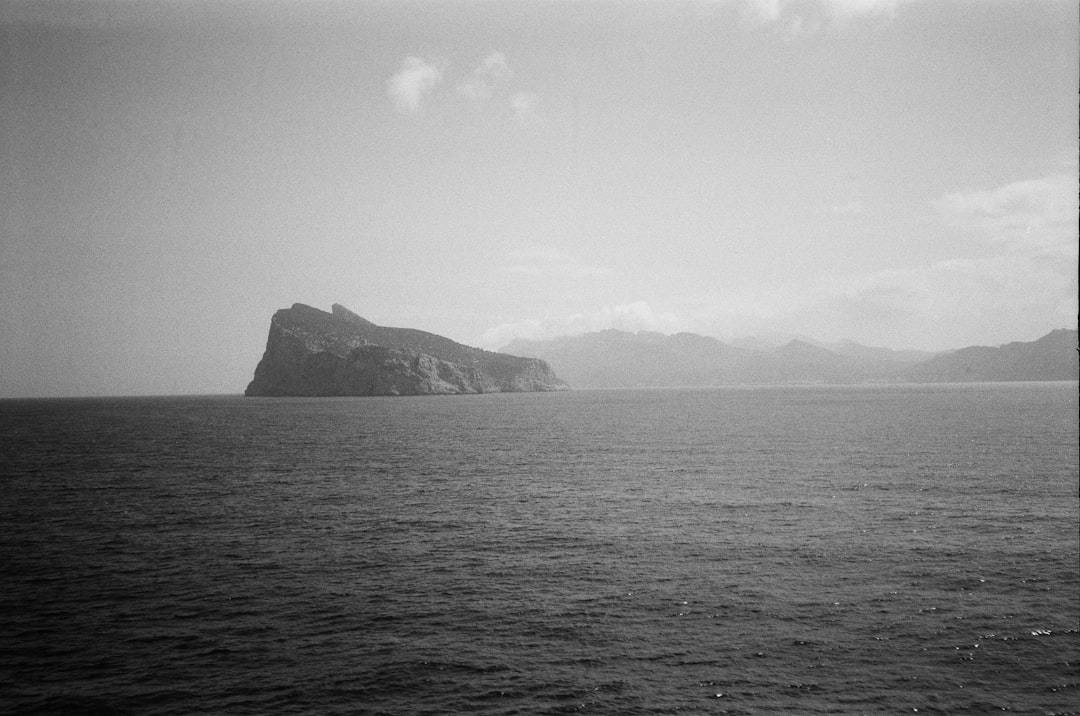Aubrey Drake Graham, known simply as Drake, was born on October 24, 1986, in Toronto, Canada. His upbringing was marked by a blend of cultural influences, as his father, Dennis Graham, was an African American musician from Memphis, while his mother, Sandi Graham, is a Jewish Canadian. This diverse background played a significant role in shaping Drake’s artistic identity.
Raised in a single-parent household after his parents’ separation when he was five, Drake’s early life was characterized by financial struggles and the challenges of growing up in a multicultural environment. Despite these hardships, he found solace in music and performance, often drawing inspiration from the sounds that surrounded him. Drake’s introduction to the music industry began at a young age.
He was exposed to various musical genres, from hip-hop to R&B, which would later influence his unique sound. As a teenager, he developed an interest in acting and landed a role on the Canadian teen drama series “Degrassi: The Next Generation.” This experience not only honed his performance skills but also provided him with a platform to explore his passion for music.
He began recording his own tracks and collaborating with local artists, laying the groundwork for what would become a groundbreaking career in the music industry.
Key Takeaways
- Drake grew up in Toronto, Canada, and was introduced to the music industry at a young age by his father, who was a drummer for Jerry Lee Lewis.
- After gaining fame as an actor on the TV show “Degrassi: The Next Generation,” Drake made the transition to a full-time music career, releasing his debut mixtape “Room for Improvement” in 2006.
- “So Far Gone” and “Thank Me Later” were pivotal in Drake’s rise to fame, showcasing his unique blend of singing and rapping and earning him critical acclaim and commercial success.
- Drake’s collaborations with other artists and his influence on the music industry have solidified his status as one of the most impactful figures in contemporary music.
- From the introspective “Take Care” to the introspective “Views,” Drake’s sound has evolved, reflecting his personal growth and emotional journey through his music.
From actor to rapper: Drake’s transition into a full-time music career
Drake’s transition from actor to rapper was not an overnight phenomenon; it was a gradual evolution fueled by his passion for music. After leaving “Degrassi,” he decided to pursue a career in music full-time. In 2006, he released his first mixtape, “Room for Improvement,” which showcased his lyrical prowess and ability to blend different musical styles.
This project marked the beginning of his journey as a serious artist and garnered attention within the underground hip-hop scene. However, it was not until he released “Comeback Season” in 2007 that he began to gain significant recognition. The release of “Comeback Season” featured collaborations with established artists and showcased Drake’s ability to craft catchy hooks and introspective lyrics.
His unique style—a fusion of rap and R&B—set him apart from his contemporaries. As he continued to refine his sound and develop his artistic identity, it became evident that Drake was not just another aspiring rapper; he was a force to be reckoned with. His determination to succeed in the music industry led him to network with influential figures, ultimately paving the way for his breakthrough.
The breakthrough: Drake’s rise to fame with “So Far Gone” and “Thank Me Later”

Drake’s breakthrough moment came with the release of his 2009 mixtape “So Far Gone.” The project featured hit singles like “Best I Ever Had” and “Successful,” which catapulted him into the mainstream spotlight. The mixtape received critical acclaim and showcased Drake’s ability to blend introspective lyrics with catchy melodies. It was a turning point in his career, as it not only solidified his place in the hip-hop landscape but also earned him a Grammy nomination for Best Rap Album.
The success of “So Far Gone” laid the foundation for his debut studio album, “Thank Me Later,” which was released in 2010. “Thank Me Later” debuted at number one on the Billboard 200 chart and featured collaborations with prominent artists such as Jay-Z and Lil Wayne. The album’s commercial success further established Drake as a leading figure in the music industry.
With tracks like “Over” and “Find Your Love,” he demonstrated his ability to create anthems that resonated with a wide audience. The combination of introspective storytelling and infectious beats became a hallmark of Drake’s style, setting the stage for his future projects and solidifying his status as a household name.
Collaborations and influence: Drake’s impact on the music industry
| Metrics | Data |
|---|---|
| Number of Collaborations | Over 200 collaborations with various artists |
| Chart-Topping Hits | Over 45 songs in the top 10 of the Billboard Hot 100 |
| Grammy Awards | 4 Grammy Awards and 44 nominations |
| Streaming Records | Multiple records for most streams in a single day on platforms like Spotify and Apple Music |
| Global Influence | Impact on music trends and styles worldwide |
Drake’s influence on the music industry extends far beyond his solo work; he has become known for his prolific collaborations with other artists across various genres. His ability to seamlessly blend different musical styles has made him a sought-after collaborator, resulting in chart-topping hits with artists like Rihanna, Future, and Travis Scott. These collaborations not only showcase his versatility but also highlight his willingness to push boundaries and experiment with new sounds.
Moreover, Drake’s impact on the music industry can be seen in the way he has redefined the role of the artist in the digital age. He has embraced social media and streaming platforms, using them as tools to connect with fans and promote his music. His strategic use of platforms like Instagram and Twitter has allowed him to cultivate a loyal fanbase while also influencing emerging artists to adopt similar approaches.
By prioritizing authenticity and relatability in his interactions with fans, Drake has set a new standard for how artists engage with their audience.
The evolution of Drake’s sound: From “Take Care” to “Views”
As Drake’s career progressed, so did his sound. His 2011 album “Take Care” marked a significant evolution in his musical style, blending elements of hip-hop, R&B, and electronic music. The album received widespread acclaim and won the Grammy Award for Best Rap Album.
Tracks like “Marvins Room” and “The Ride” showcased his introspective lyricism and emotional depth, allowing listeners to connect with him on a personal level. This willingness to explore vulnerability set him apart from many of his contemporaries. In 2016, Drake released “Views,” an album that further pushed the boundaries of his sound.
With hits like “Hotline Bling” and “One Dance,” he incorporated dancehall influences and showcased his ability to adapt to changing musical trends. The album’s commercial success solidified his status as one of the most influential artists of his generation. As he continued to evolve musically, Drake remained committed to authenticity, using his platform to share personal experiences while also experimenting with new sounds that resonated with audiences worldwide.
Personal growth and vulnerability: Exploring Drake’s emotional journey through his music

Drake’s music often reflects his personal growth and emotional journey, allowing listeners to witness the complexities of his life through his lyrics. He has never shied away from exploring themes of love, heartbreak, and self-reflection in his songs. Tracks like “Take Care” and “Feel No Ways” delve into the intricacies of relationships, showcasing both vulnerability and strength.
This emotional honesty has resonated with fans who appreciate the relatability of his experiences. Moreover, Drake’s willingness to confront his insecurities and struggles has contributed to his authenticity as an artist. He often shares moments of self-doubt and introspection in his music, creating a connection with listeners who may be navigating similar challenges.
By embracing vulnerability, he has carved out a space for open dialogue about mental health and emotional well-being within the hip-hop genre—a space that was often overlooked in previous generations.
The business of Drake: His success as a businessman and entrepreneur
Beyond his musical achievements, Drake has established himself as a savvy businessman and entrepreneur. He founded OVO Sound, a record label that has signed several successful artists, including PartyNextDoor and Majid Jordan. This venture not only showcases his commitment to nurturing emerging talent but also solidifies his position as a key player in the music industry.
In addition to OVO Sound, Drake has ventured into various business endeavors that extend beyond music. He has collaborated with brands like Nike and Apple Music, leveraging his influence to create successful partnerships that resonate with fans. His ability to navigate the business landscape while maintaining artistic integrity is a testament to his multifaceted approach as an artist and entrepreneur.
Controversies and challenges: Drake’s public persona and the obstacles he’s faced
Despite his immense success, Drake has faced controversies and challenges throughout his career that have shaped his public persona. From feuds with fellow artists like Meek Mill and Pusha T to allegations of ghostwriting, he has navigated a complex landscape of public scrutiny. These controversies have often sparked debates within the hip-hop community about authenticity and artistic integrity.
However, rather than allowing these challenges to define him, Drake has used them as opportunities for growth. He has addressed criticisms head-on through his music, often referencing conflicts in tracks like “Duppy Freestyle.” By confronting these issues openly, he has demonstrated resilience while also reinforcing his status as one of hip-hop’s most influential figures.
Drake’s impact on pop culture: His influence beyond the music industry
Drake’s influence extends far beyond the realm of music; he has become a cultural icon whose impact is felt across various facets of pop culture. His catchphrases, fashion choices, and social media presence have permeated everyday life, making him a recognizable figure even among those who may not be avid fans of hip-hop. The “Drake Effect,” a term used to describe how artists gain popularity after collaborating with him or being associated with him, highlights the extent of his influence within the industry.
He has successfully bridged the gap between music and mainstream entertainment, making him one of the most recognizable figures of this generation.
The legacy of Drake: How he has shaped the future of hip-hop and R&B
Drake’s legacy is one that will undoubtedly shape the future of hip-hop and R&B for years to come. His innovative approach to blending genres has paved the way for a new generation of artists who are unafraid to experiment with their sound. By breaking down traditional barriers within these genres, he has encouraged emerging musicians to explore their creativity without limitations.
Moreover, Drake’s emphasis on emotional honesty in songwriting has inspired countless artists to embrace vulnerability in their work. As more musicians prioritize authenticity over bravado, it is clear that Drake’s influence will continue to resonate within the industry long after he has left an indelible mark on it.
What’s next for Drake: A look at his future projects and continued evolution
As Drake continues to evolve as an artist, fans eagerly anticipate what lies ahead for him in terms of future projects. With each release, he pushes boundaries while remaining true to himself—a quality that has endeared him to millions worldwide. Speculation about upcoming albums or collaborations keeps fans engaged as they look forward to witnessing how he will continue to shape the musical landscape.
In addition to new music, there are indications that Drake may further expand his business ventures or explore new creative avenues outside of traditional music formats. Whether through film projects or innovative partnerships within technology or fashion industries, it is clear that Drake remains committed to evolving both personally and professionally as he navigates this ever-changing landscape. In conclusion, Drake’s journey from humble beginnings to becoming one of the most influential figures in contemporary music is marked by resilience, creativity, and an unwavering commitment to authenticity.
His impact on hip-hop and pop culture is undeniable; as he continues to evolve artistically while embracing new challenges ahead—his legacy will undoubtedly inspire future generations of musicians seeking their own paths within this dynamic industry.
Drake’s Passage, a treacherous stretch of water between the southern tip of South America and Antarctica, is renowned for its unpredictable weather and challenging navigation conditions. This passage is a significant route for explorers and adventurers heading to the icy continent. For those interested in learning more about the geographical and historical significance of such maritime routes, you might find this related article insightful. It delves into various geographical quests and the challenges faced by explorers throughout history.
WATCH NOW! Drake Passage: Earth’s Deadliest Waters Revealed
FAQs
What is Drake’s Passage?
Drake’s Passage is a body of water located between South America’s Cape Horn and the South Shetland Islands of Antarctica. It connects the southwestern part of the Atlantic Ocean with the southeastern part of the Pacific Ocean.
Who is Drake’s Passage named after?
Drake’s Passage is named after the English explorer Sir Francis Drake, who is known for being the first Englishman to circumnavigate the globe and for his involvement in the defeat of the Spanish Armada.
What is the significance of Drake’s Passage?
Drake’s Passage is known for its notoriously rough and unpredictable seas, making it a challenging route for ships to navigate. It is also an important route for maritime trade and scientific research expeditions to Antarctica.
What are the weather conditions like in Drake’s Passage?
Drake’s Passage is known for its harsh weather conditions, including strong winds, high waves, and frequent storms. These conditions make it one of the most challenging and dangerous maritime routes in the world.
Are there any notable landmarks or features in Drake’s Passage?
Drake’s Passage is primarily known for its open water and challenging sailing conditions. However, there are no specific landmarks or features within the passage itself.
